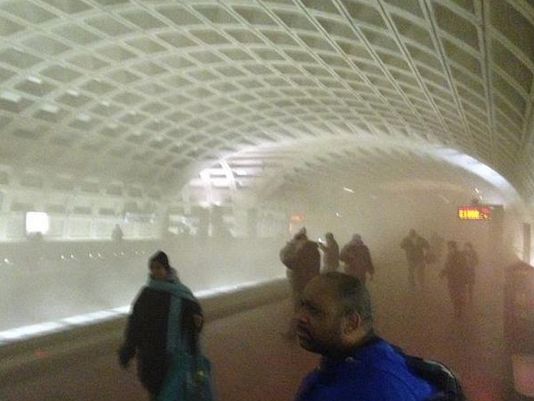The ZRR expects more & more residents riding Metro
Over the past several years, DC planning and zoning officials have been reviewing and changing DC’s real estate development rules, a process referred to as the Zoning Regulations Rewrite (ZRR).
The Office of Planning went hard during the #ZRR to amend the zoning code so that the area known as Downtown DC is tripled in size, and where parking requirements are all-together eliminated.
Downtown DC has some of the tallest buildings with most density, driving significant traffic, killing any remaining parking, even in garages, and abusing daily the city’s aging infrastructure, including the recent troublesome time for Metro, a transit system routinely catching on fire.
Back in 2001, WMATA conducted a Metro transit capacity study which had predicted the future, which is now:
Expanding the capacity of the existing Metro system to accommodate a doubling of ridership, which will just maintain its vital market share in the region during the next 25 years, is a prudent and cogent investment. The existing system cost $9.4 billion to construct over a period of thirty years; the $4.5 billion investment in core capacity improvements represents half of that original cost and 20% of the price–more than $22 billion–that would be required to build it today. This investment is in the context of the $246 billion annual economy of the Washington Metropolitan area. The return on investment is compelling: an enhanced and expanded Metro system fully capable of meeting market demand, fostering economic vitality and an enhanced quality of life, meeting the mobility needs of this vibrant region as it continues to grow and providing requisite transit services during times of emergency.

When do the Corporations kick in their fair share?
Using the Zoning Regulations Rewrite process and tapping connections in DC’s planning offices, “Smart Growth” associated agents, Cheryl Cort and David Alpert, have vociferously called for a zoning amendments wishlist serving DC’s real estate investment community, i.e. the loosening of standards governing parking in DC.
Less parking requirements, they say means less cars on the streets and more people on public transit. Perhaps this why Metro has reached capacity in many parts of the system. Yet despite business being good, WMATA’s Metro system is bleeding money.
Part of the reason for increased transit costs is liability. In recent years Metro has demonstrated a keen ability to roll the razor edge of danger for riders and residents who have witnessed high-profile Metro incidents and accidents as part of the larger DC municipal systems collapse.
It is clear, the Metro system is aging and maxing out, leading to burn out and death.
Questions:
- How many more people need to get hurt on Metro, or even die before the City gets serious about regional urban planning?
- Shouldn’t District planning officials be seeking no-strings attached funding from the corporate world, especially those businesses “downtown” who benefit significantly from workers getting to their jobs through DC’s municipal systems? That is, what’s the 1%’s share of our collective transit burden?
- Is it because the smart growth community is funded by developer-interests they won’t advocate that developers be required to contribute to infrastructure and transit upgrade costs serving their new luxury hotel, condo, and office projects?
#ZRR
Chapter: 10-A25 of the DC Municipal Regulations was to guide the ZRR process, but the DC Zoning Commission did not evaluate the efficacy of OP’s zoning review.
The Zoning Regulations Rewrite is scheduled to be implemented this September.
Some residents whose concerns like the tripling of “downtown”, inter-alia, were dismissed by OP and ignored during the zoning review process are organizing to challenge this unacceptably poor planning here in the Nation’s Capitol in the 21st Century.


